Jeep Avenger first drive: is this small EV the king of the urban jungle?
The first all-electric Jeep promises 249 miles of range and lots of kit for under £40,000


In many ways, the first all-electric Jeep is probably not what you’d expect from a brand synonymous with off-roaders and SUVs. For starters the Avenger is much smaller than it looks in photographs, being just 1 cm longer than a Volkswagen Polo. It’s also not all-wheel-drive – with only a single electric motor driving the front wheels – and sits on the same platform as the Peugeot e-2008 and Vauxhall Mokka Electric, both fellow members of the Stellantis group. It won’t even be sold in Jeep’s native US.
And yet, it’s a car that actually makes a great deal of sense. Built to tackle the urban jungle as much as gravel, sand, snow and mud, the Avenger promises to blend a tough and characterful exterior with a practical interior designed to look and feel more upmarket than buyers of an electric car starting at £35,700 might expect. It also promises 249 miles of WLTP range from its 54 kWh battery pack, 100 kW charging and a generous helping of tech for the price.
Is the compact Avenger still full of Jeep DNA, or is it trying to take the brand in a new direction? Read on to find out.

Price and availability
There are three trim levels of Avenger to choose from, called Longitude, Altitude and Summit, and priced from £35,700, £37,400 and £39,600 respectively. I drove the top-spec Summit for this article, but all models are blessed with wireless Apple CarPlay and Android Auto as standard, displayed on a 10.25-inch touchscreen display on the centre of the dashboard.
Every trim level has the same single-motor drivetrain and the same battery capacity, while a dual-motor, all-wheel-drive Avenger called the 4XE will arrive in the second half of 2024.
The price of the single-motor Avenger lands somewhere between the all-new Mini hatchback and recently-revised Volkswagen ID.3, with the Jeep being the taller and inherently more practical of the trio. The Avenger is available in the UK now, with deliveries commencing as we write these very words; it won’t be available in the US.
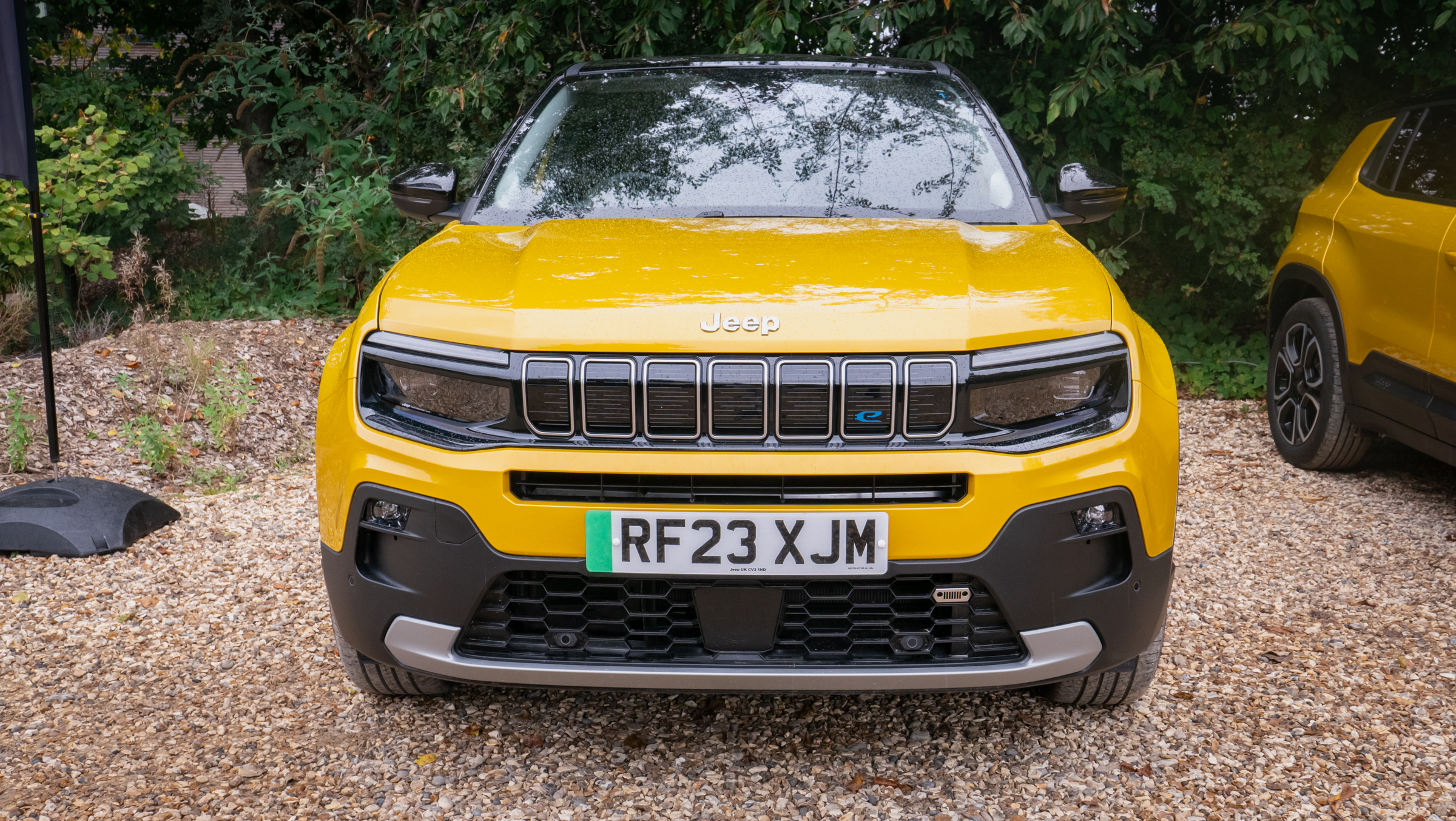
Design and features
The Avenger’s chunky exterior and iconic seven-piece Jeep grille make it look much larger than it really is. It’s actually a pretty compact car, at just 4.08m long, 1.78m wide and 1.53m tall.
Get all the latest news, reviews, deals and buying guides on gorgeous tech, home and active products from the T3 experts
Despite being an all-new car, and its first EV, Jeep’s design team has played it safe with the Avenger, opting for a conservatively familiar aesthetic. Trademark design traits like the boxy wheel arches, floating C-pillar and ‘X’ rear light graphic are all present and correct, each harking right back to the Willy’s Jeep of World War II.
Although it doesn’t want to rock the design boat, Jeep believes shrinking its recognisable house style into a compact EV will be popular among young buyers who’ve never owned a Jeep before. The company says it expects 20% of Avenger buyers to be under 35, 40% to be female and a massive 90% to be new to the brand.
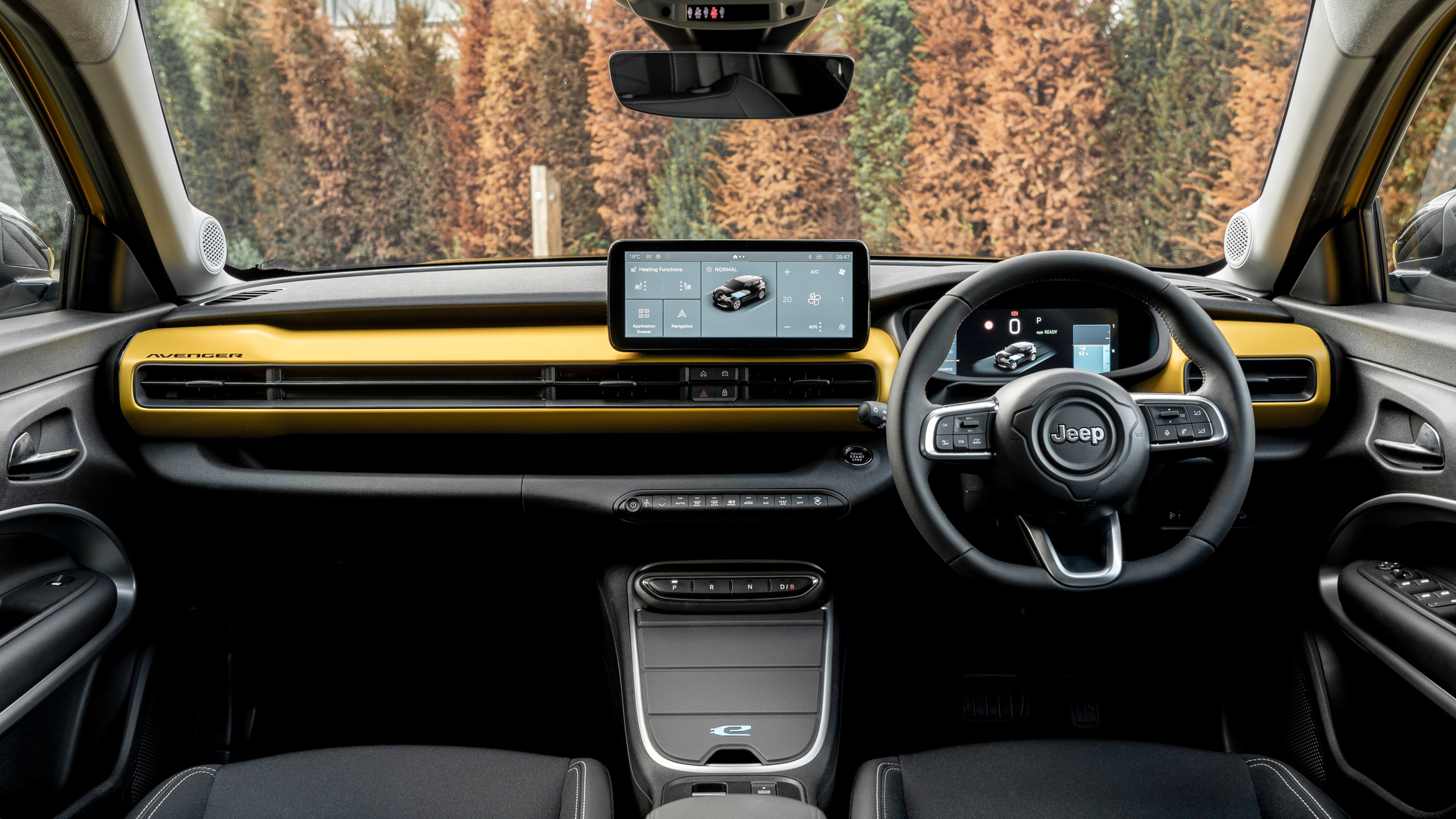
Those newcomers might expect a degree of toughness from a car with the Jeep badge on its nose, even one as small as a VW Polo. And that’s exactly what they’ll get. The Avenger has what Jeep calls 360-degree protection, thanks to black plastic cladding fitted to the bumpers and sills. It’s ‘moulded in colour’, which means if it’s scratched it’ll stay the same colour. Jeep says it’s designed to protect the Avenger during light off-roading but also in the “urban environment”, where low walls, steep ramps, bollards and careless parking can all pose a threat to shiny metal bodywork. On a similar note, the headlights are receded slightly behind their plastic frame in a bid to protect them from low-speed collisions.
Inside, the cabin is spacious up front but a little restricted in the second row. The high roofline helps with headroom back there, but the Avenger’s rear seats are best suited to children or adults under 6ft. Up front, there’s a good amount of space and a huge amount of storage.
Jeep has somehow crammed 34 litres of cubby storage in here, including a central bin below the dashboard that houses a wireless phone charger and is covered by a magnetic cover like that of an iPad. There’s also a pair of cup holders and further storage beneath the central armrest.
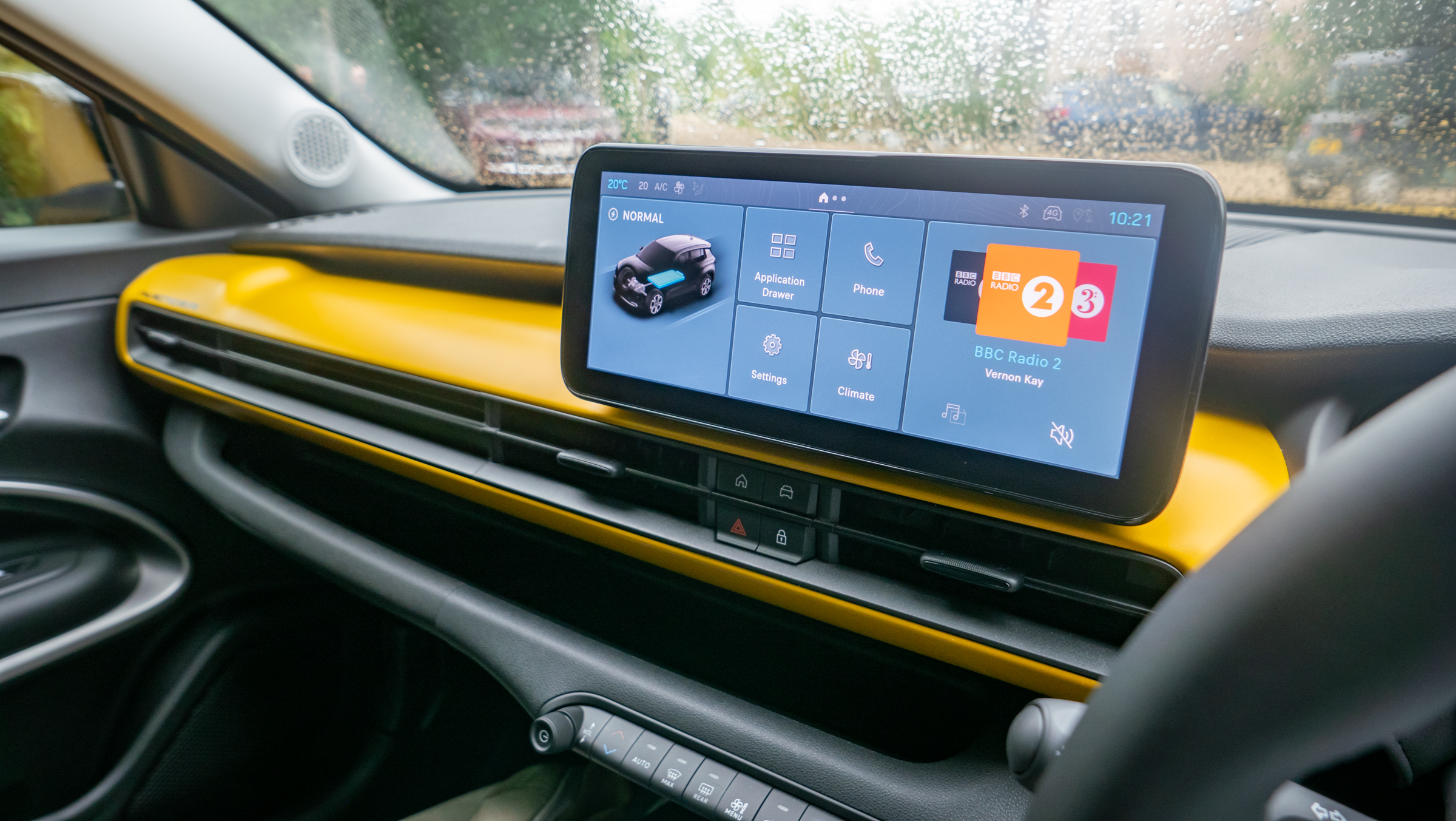
The dashboard, complete with bright yellow highlights in the Summit edition (silver on the Altitude and black/grey on the entry-level Longitude) has a 10.25in touchscreen at its centre. The infotainment system is pretty good. It is clear, crisp and responsive, and there’s a physical home button beneath it, which is really handy if you get lost in a sub-menu and need to quickly return to the home screen. Tomtom navigation is optional, but in reality we suspect most buyers will use Apple CarPlay or Android Auto, both of which are available wired or wireless on every model of Avenger.
Below the screen you’ll find a row of physical buttons for adjusting media volume and cabin temperature. They are clearly labelled, easy to use and we much prefer them to cars that put their climate controls on the touchscreen. Lastly, below this are the car’s gear select buttons. These have a fairly nice action to them, and a second press of the Drive button increases the strength of the Avenger’s regenerative braking system.
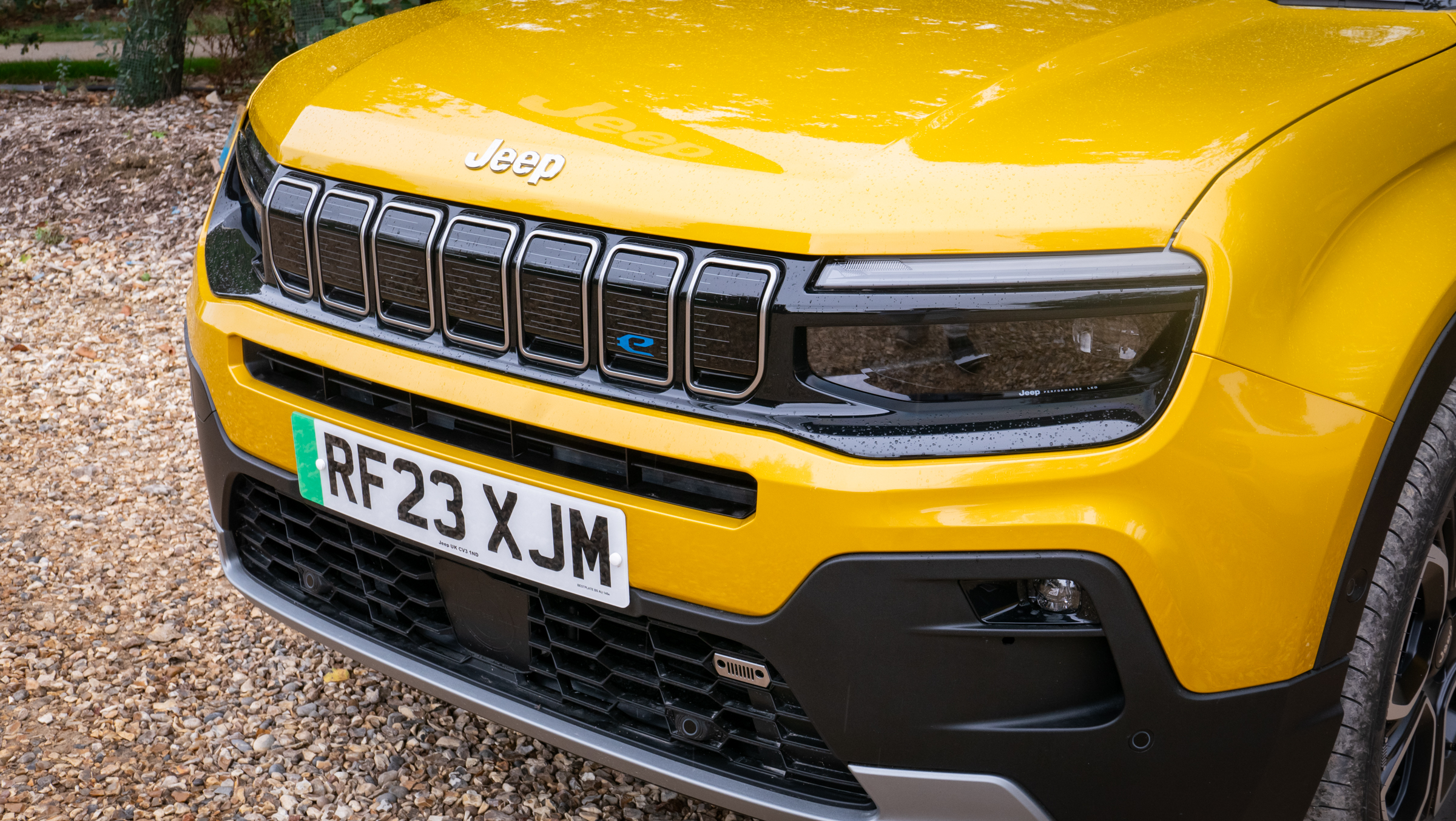
Performance and range
The Avenger is powered by a single motor sending 115 kW (156 bhp) and 260 Nm of torque to the front wheels. Those figures are actually only achievable in Sport mode, or when you press the two-stage accelerator right to the floor. It is not a quick car by any stretch of the imagination, with Jeep stating a leisurely 0-62 mph time of 9.6 seconds and a top speed of 93 mph.
That’s fine though, as it still has the initial get-up-and-go that makes electric cars feel brisk when accelerating from low speeds. The ride is decent enough for a car at this price point, but a stiffness likely engineered in to help disguise the mass of the battery can make the Jeep feel quite firm. It gets a little unsettled over more aggressive speed bumps but otherwise rides well. The steering is light and responsive, but almost entirely lacking in feel, not that that should really be a concern for buyers of a small family SUV like this.
Interestingly – and surprisingly, given this car is only front-wheel-drive – Jeep has included off-roading modes for tackling mud, sand and snow, and there’s even a hill descent control system like that normally found in Land Rovers. We didn’t get a chance to test the Avenger off-road, but experienced it tackle a small course of steep metal ramps, albeit from the passenger seat. This demonstrated the car’s impressive 200mm of ground clearance, and how when grip is lost by one front wheel, the car quickly works things out and shifts power to the other wheel.
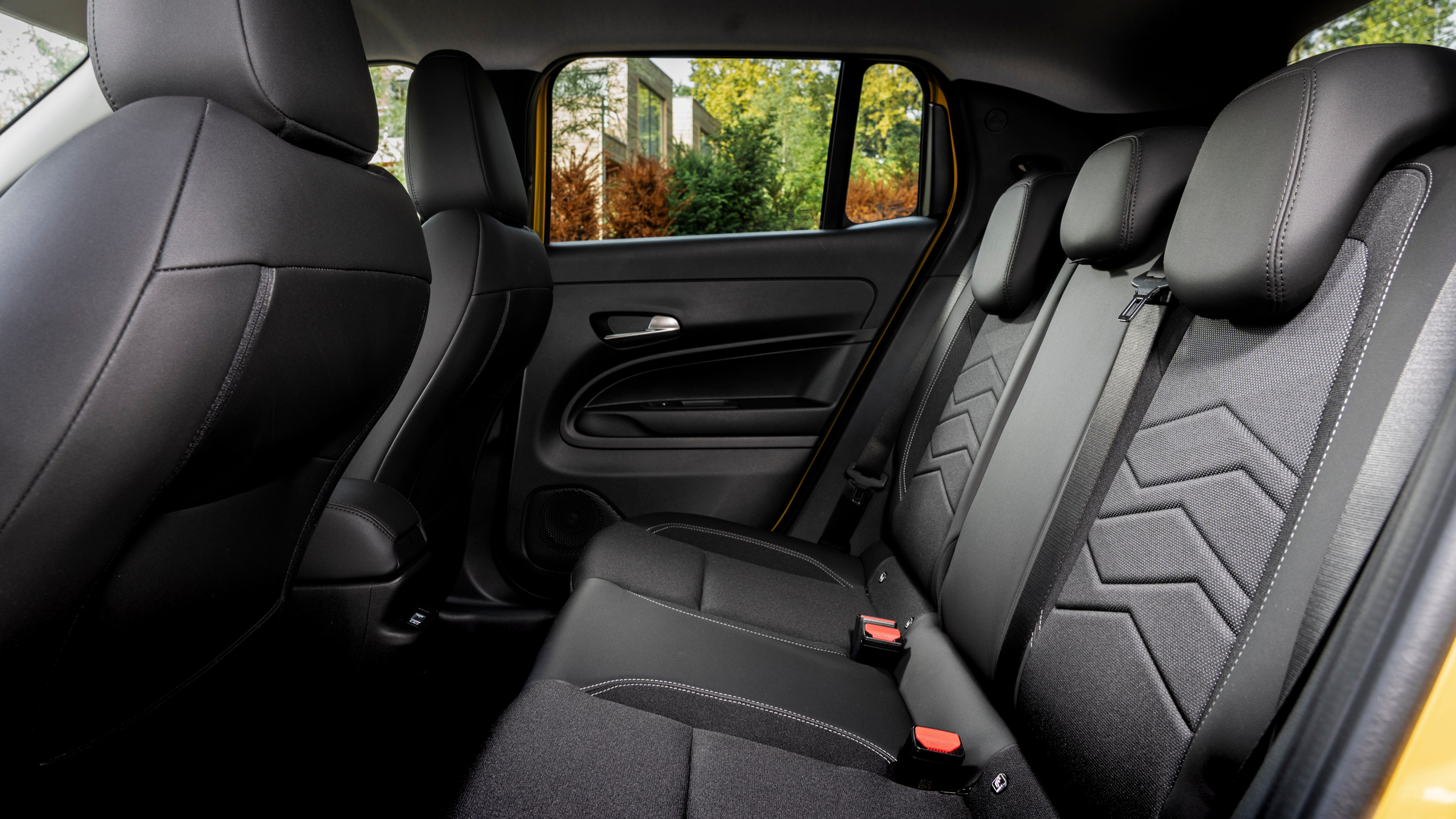
I was pleased with how the Avenger averaged an efficiency of 4.2 miles per kWh during a 76-mile drive consisting of country roads, sweeping A roads and motorways. Multiply this by the 50.8 kWh usable battery capacity and buyers can expect a real-world range of 213 miles. That isn’t far behind Jeep’s claim of 249 miles, and to its credit we really weren't trying to conserve energy at any point during the drive. If we’d used Eco mode and driven more carefully, that claim may have fallen within reach.
Also impressive was the car’s range estimation. I began the day at 100% charge and with an indicated range of 248 miles, and after 78 miles the Jeep had an indicated 67% and 160 miles remaining. This means the initial estimate was only out by 10 miles and hadn’t tried to be overly optimistic.
The battery can charge at up to 100 kW. Although I didn’t get a chance to top up the car myself, Jeep says the Avenger will gain up to 19 miles of range in three minutes, or 62 miles in nine minutes.
With regenerative braking enabled the car will slow itself when you lift off the accelerator, but it isn't as strong as in other cars and can't be adjusted, so one-pedal driving isn't possible and you'll need to use the brake pedal more often than in some other EVs.

First-Drive Verdict
The Jeep Avenger is a small EV with character. At first I thought it might be a city dweller that fills its wardrobe with army surplus clothing. But, while it won’t be scrambling through muddy forests any time soon, the Avenger got under my skin.
It might only be a front-drive EV the size of a Polo, but it has been thoughtfully designed to pack lots of practicality into a small footprint. I quickly grew to like the junior Jeep looks, and the interior is smartly designed to offer plenty of storage without feeling too utilitarian.
The rear seats are tight for people over 6ft and there isn’t much in the way of performance. But as a small family car that can manage city driving as well as the occasional gravel track – while also delivering decent range and efficiency, plus lots of useful kit – it’s an enticing and reasonably priced package. I'm looking forward to spending more time with the Avenger, to see if it really can handle family life, and we’re keen to see what the dual-motor, all-wheel-drive model will be capable of off-road when it arrives next year.
Alistair is a freelance automotive and technology journalist. He has bylines on esteemed sites such as the BBC, Forbes, TechRadar, and of best of all, T3, where he covers topics ranging from classic cars and men's lifestyle, to smart home technology, phones, electric cars, autonomy, Swiss watches, and much more besides. He is an experienced journalist, writing news, features, interviews and product reviews. If that didn't make him busy enough, he is also the co-host of the AutoChat podcast.
